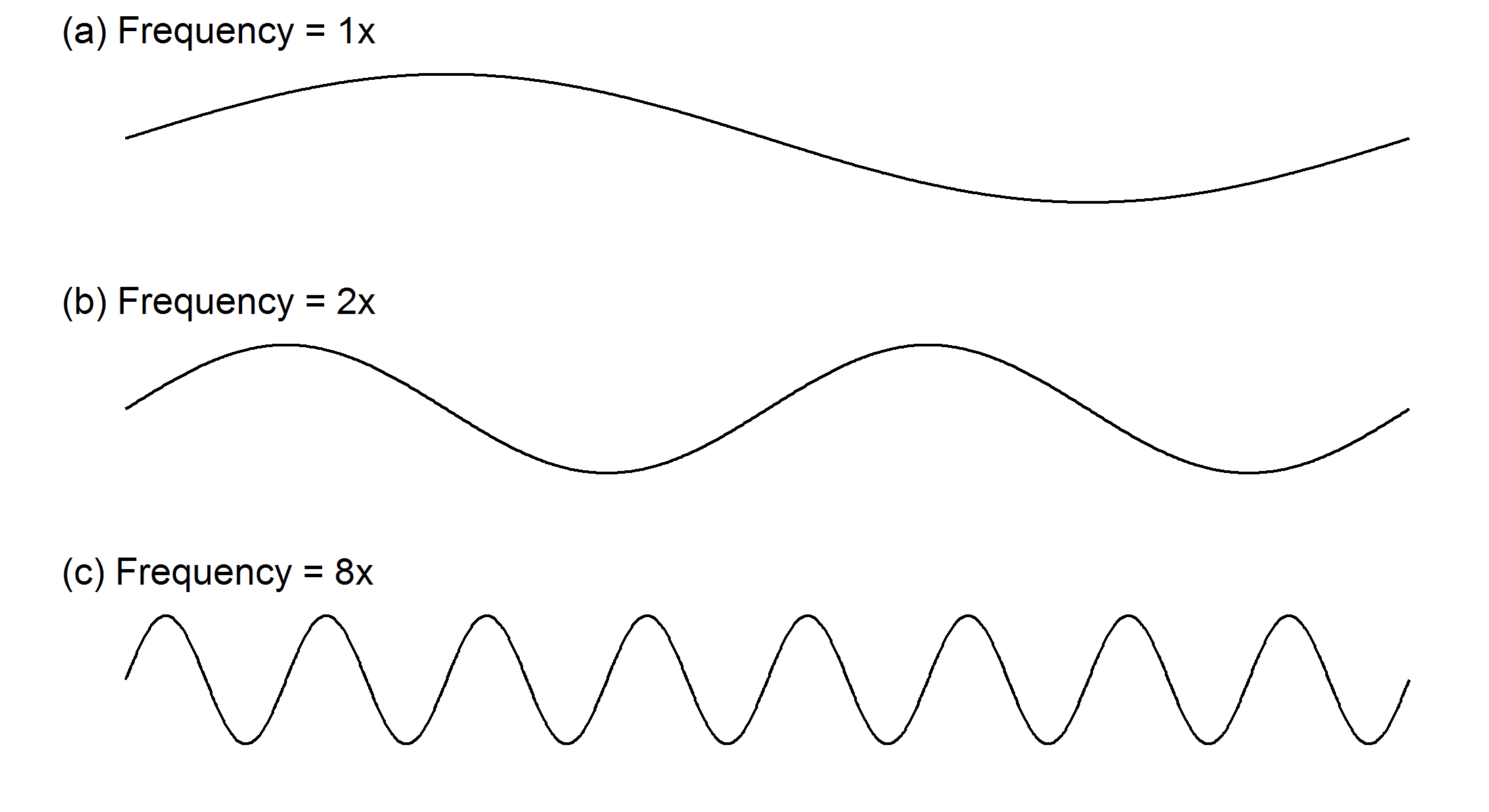Frequency Units
The basic frequency unit is 1 Hertz (Hz).
If the frequency of some event is n Hz, it means that the event occurs n times per second
(see Time UnitsTime Units).
Thus, $1~\textrm{Hz} = 1 / \textrm{second} = 1~\textrm{second}^{-1}$.
Each frequency value corresponds to a time period.
For example, 20 Hz corresponds to 50 ms because
Some additional useful frequency units (with corresponding time periods) are presented in the below table:
| Unit | Symbol | Value in Hz | Time period |
|---|---|---|---|
| Terahertz | THz | $10^{12}$ | 1ps |
| Gigahertz | GHz | $10^{9}$ | 1ns |
| Megahertz | MHz | $10^{6}$ | 1us |
| Kilohertz | kHz | $10^{3}$ | 1ms |
| Hertz | Hz | 1 | 1s |
| Millihertz | mHz | $10^{-3}$ | $10^{3}$s |
| Microhertz | uHz ($\mu$Hz) | $10^{-6}$ | $10^{6}$s |
| Nanohertz | nHz | $10^{-9}$ | $10^{9}$s |
The common symbol for frequency is f.
If we want to calculate the frequency of an event,
we should divide the number of events by a time interval that contains all these events.
For example, if something happens 42 times per day,
it means that the frequency of the event is:
The frequency term is widely used in many physics and engineering disciplines. Here are some famous examples:
- Humans can hear sounds with frequencies between
20 Hzand20 kHz. - Visible spectrum (a part of the electromagnetic spectrum that is visible to the human eye) is about
430..770 THz. The frequency range for the yellow color is about508..526 THz. - 440
Hzis the frequency of the musical note ofAabove middleC(A440, the pitch standard). - Communication with submarines uses extremely low frequency: from
3to30 Hz. - Shortwave radio uses frequencies in the range
1.6..30 MHz. - Frequency of a typical microwave oven is about
2.45 GHz. - The most popular WiFi frequencies are about
2.4 GHz(802.11b/g/n/ax) and5 GHz(802.11a/h/j/n/ac/ax).
If we are talking about waves and we want to draw these waves on a plot, the frequency can be easily compared by a glance. Let us consider the following figure:
In this figure, we can observe three waves with different frequencies:
- (a) Let’s say that the first wave is a “reference” wave with a frequency
1x - (b) The second wave frequency is twice (
2x) that of the reference one - (c) The third wave has frequency =
8x(eight times more than the reference one; four times more than the second frequency)

